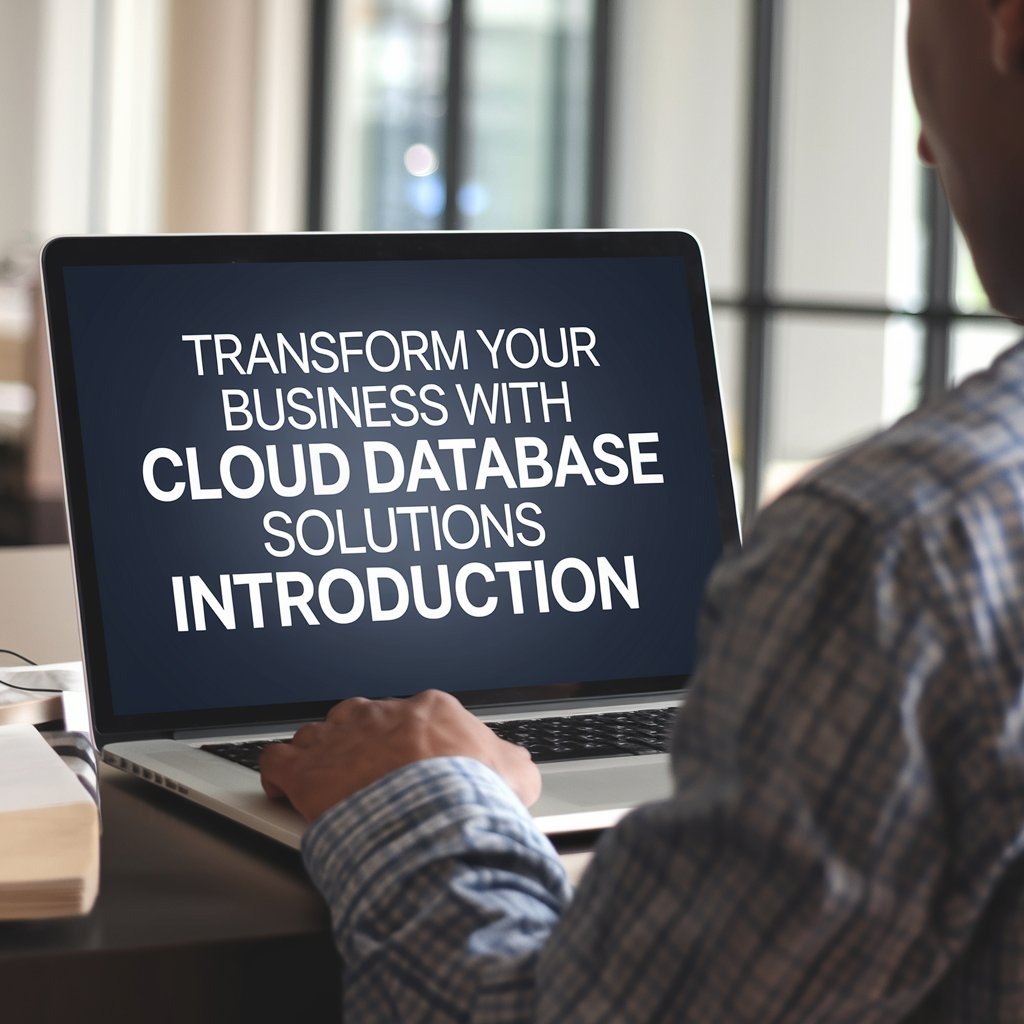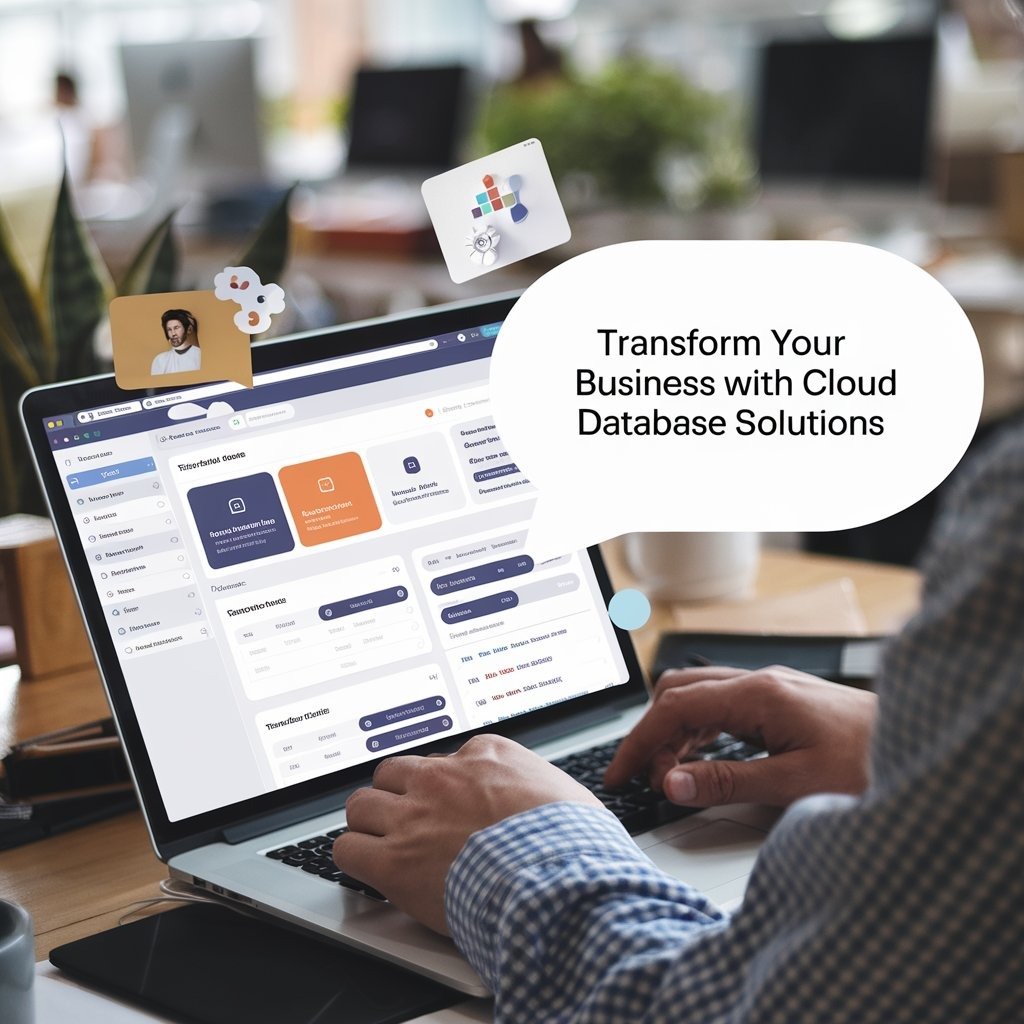Introduction
Cloud databases are crucial in today’s digital era, powering digital transformation for businesses. This guide explores cloud database solutions—from fully managed systems to top cloud databases on platforms like AWS and Google Cloud.
We highlight the benefits of cloud transformation, including improved database scalability, cost efficiency, and streamlined cloud migration strategies. Whether you need a managed cloud database for enterprise automation or guidance on overcoming challenges in cloud adoption, our guide offers practical insights.

Drawing on over 15 years of industry experience, I share reliable, actionable advice to help you choose a cloud database solution that supports your overall cloud strategy, drives IT transformation, and enables smooth, sustainable digital growth.
Understanding Cloud Databases
Cloud databases are modern solutions that drive digital transformation and simplify IT operations for businesses. They offer managed cloud database services that enable enterprise cloud adoption by providing scalability, high availability, and cost efficiency.
Whether evaluating a managed relational database on Google Cloud or a scalable NoSQL cloud database service, these solutions streamline operations and support database automation.
Top cloud databases like Cloud SQL, Cloud Bigtable, Cloud Spanner, and Firestore empower organizations with the best databases for enterprise automation. With deep technical expertise and hands-on experience, I explain how to choose the right cloud database solution and implement a migration strategy to effectively overcome challenges in cloud adoption.
Benefits and Challenges
Cloud databases deliver significant benefits while posing challenges. They offer unmatched scalability, flexibility, and cost efficiency that empower enterprise cloud adoption.
Managed cloud databases—such as Cloud SQL, Cloud Bigtable, Cloud Spanner, and Firestore—simplify IT transformation and drive digital transformation through robust database automation.
These top cloud databases provide the best solutions for enterprise automation, enabling integration and improved performance. However, navigating cloud migration and overcoming challenges in cloud adoption require careful planning.
Leveraging my proven expertise in IT transformation, I help organizations understand how to balance these benefits with challenges to achieve successful cloud transformation.
Detailed Vendor Comparison
Choosing the best cloud database solution starts with a detailed vendor comparison. Top cloud database providers like AWS, Google Cloud, and Microsoft Azure offer managed cloud database services that drive enterprise cloud adoption.

For example, Google Cloud’s managed relational database on Cloud SQL and its scalable NoSQL services—such as Cloud Bigtable, Cloud Spanner, and Firestore—are designed for digital transformation. Vendors like Oracle and IBM also provide database services supporting IT transformation.
Based on extensive research and real-world experience, I analyze key features like database automation and scalability to help you implement a cloud migration strategy and navigate cloud transformation for your business.
Cloud Transformation Strategy
A robust cloud transformation strategy is vital for digital transformation. By integrating managed cloud database solutions, businesses can streamline their cloud migration and IT transformation processes.
An effective strategy begins with assessing your current infrastructure and identifying the best cloud database solution—whether it’s a fully managed relational database or a scalable NoSQL service. Leveraging database automation simplifies complex migration tasks and supports enterprise cloud adoption.
My long-standing experience in guiding digital transformations ensures that a clear roadmap will balance cost efficiency, security, and performance, empowering businesses to overcome challenges and drive sustainable growth.
Innovation and Future Trends (Unique Section)
Cloud databases continue evolving with innovative features driving digital transformation. Advances in AI and machine learning enhance database automation, making managed relational databases on Google Cloud and scalable NoSQL cloud database services more efficient.
Emerging trends like serverless architectures, real-time cloud databases, and edge computing are shaping future cloud migration strategies.
As organizations navigate cloud transformation, embracing hybrid cloud databases and cloud-native solutions becomes crucial for IT transformation. Drawing on my expertise and industry insights,
I reveal how these innovations improve scalability, performance, and ultimately support enterprise cloud adoption, paving the way for a robust, future-proof cloud strategy.
Regulatory, Security, and Sustainability Considerations (Unique Section)
When choosing cloud database solutions, regulatory compliance, robust security, and sustainability are crucial. Managed cloud databases like Cloud SQL and Cloud Spanner simplify data governance while ensuring encryption and strict access controls.
Companies must balance cloud migration strategies with stringent data privacy regulations and security best practices to safeguard sensitive information.
Additionally, sustainable practices in cloud infrastructure—such as energy-efficient data centers and green cloud computing—are increasingly important.
With authoritative insights from years of experience in data security and compliance, I explain how integrating these elements helps overcome challenges in cloud adoption and supports digital transformation, ultimately boosting enterprise cloud adoption and ensuring long-term IT transformation success.
Implementation Roadmap and Cost Optimization (Unique Section)
Developing an effective implementation roadmap for cloud databases is essential for a successful digital transformation. Start by evaluating your current IT infrastructure and selecting the best cloud database solution—whether it’s a fully managed relational database on Google Cloud or a scalable NoSQL cloud database service.
Next, create a detailed cloud migration strategy that includes cost analysis, budgeting, and ROI measurement. Embrace database automation to streamline the migration process and enhance enterprise cloud adoption.
Drawing on proven expertise in cost optimization and IT strategy, I stress the importance of defining clear KPIs and optimizing hidden costs to overcome challenges in cloud adoption and achieve a cost-efficient, sustainable transformation.
Case Studies and Real-World Success Stories (Unique Section)
Real-world case studies show how cloud database solutions drive digital transformation. Businesses that adopt fully managed relational databases like Cloud SQL or scalable NoSQL cloud database services like Cloud Bigtable and Firestore experience remarkable IT transformation and enterprise cloud adoption.
For instance, one company improved performance and cost efficiency by implementing a robust cloud migration strategy and embracing database automation.

These success stories illustrate the benefits of choosing the best cloud databases for enterprise automation and navigating cloud transformation.
Leveraging firsthand experience and validated case studies, I provide examples that help organizations overcome challenges in cloud adoption and refine their cloud strategy for long-term success.
FAQs
Q: What are cloud databases?
Cloud databases are modern, scalable solutions that run on cloud platforms. They can be delivered as fully managed services (DBaaS) or via virtual machines, offering superior performance and cost efficiency compared to traditional databases.
Q: How do cloud database solutions support digital transformation?
They streamline IT transformation by enabling enterprise cloud adoption through features like automated backups, real-time analytics, and database automation.
Whether it’s a fully managed relational database on Google Cloud (such as Cloud SQL) or a scalable NoSQL cloud database service like Cloud Bigtable, these solutions drive digital transformation.
Q: What challenges exist with cloud migration and how can they be overcome?
While challenges include data security, latency, and vendor lock-in, a well-planned cloud migration strategy, clear cost analysis, and best practices for cloud transformation help overcome these hurdles.
Q: How can I choose the best cloud databases for enterprise automation?
Evaluate vendor offerings, compare features like scalability and automation, and ensure the solution aligns with your overall cloud strategy and digital transformation goals.
Q: What role does AI play in cloud databases?
AI and machine learning enhance database automation and predictive analytics, further optimizing managed cloud database services and supporting efficient enterprise cloud adoption.
Appendices and Additional Resources
This section provides a handy glossary and further reading list to support your digital transformation journey with cloud databases.
Here, you’ll find definitions of key terms like managed cloud database services, DBaaS, and scalable NoSQL cloud database services. Additionally, we offer links to white papers, case studies, and vendor comparison charts to help refine your cloud transformation strategy.
These resources cover essential topics such as enterprise cloud adoption, database automation, and IT transformation.
Backed by years of authoritative research and practical experience, use this appendix to deepen your understanding of cloud migration challenges and cost optimization, ensuring you make informed decisions on the best cloud databases for enterprise automation.


